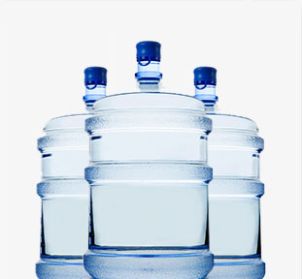
What to Do When a Disaster Threatens Your Water Supply

In the wake of the chemical release following a train derailment in East Palestine, Ohio, you may wonder what to do if your own area experiences an event that could compromise the safety of your water.
Having a plan in place can help put your mind at ease. Here are some tips to navigate an emergency that could impact your water:
1. Heed the advice of trusted experts.
Health officials and environmental authorities, including from the local, state and federal levels, will likely be gathering information to be able to offer your community useful guidance. These may include your local health department as well as federal groups such as the Environmental Protection Agency (EPA) or the Public Health Agency of Canada. You can also visit the websites of resources like the Water Quality Association and the Canadian Water Quality Association, which may share helpful insights.
2. Even if your water seems to taste, look and smell OK, don’t drink it until you have verified that it’s safe.
Keep in mind that some water contaminants – including lead, arsenic, and the “forever chemicals” known as PFAS – can’t be detected by the senses.* See additional guidelines and options for water testing to address this concern below.
3. Don’t assume boiling your water will make it safe to drink.
Boiling can make water potable in certain situations, like if it contains viruses, bacteria, parasites and other disease-causing germs. However, boiling may concentrate other contaminants, like nitrates and arsenic. That means you could increase the contaminant level in relation to the volume of water, which only worsens the problem. In addition, boiling water with volatile organic compounds (VOCs) could release the chemicals from the water into the air of your home.
The bottom line is that you need to understand what’s in your water to know whether or not boiling is a safe option.
4. If you have a water filtration system, don’t assume it can remove every harmful element.
There are reverse osmosis (RO) drinking water filtration systems with advanced filters that are certified to reduce dozens of contaminants, including lead, mercury, chlorine, PFOA, PFOS, bacteria, chloramine and VOCs. However, while ROs have the potential to reduce industrial chemicals that aren’t usually found in water, the systems may not be certified to address them.
If authorities can identify the contaminants that may have gotten into the water supply, confirm that your water treatment solution has been proven to sufficiently reduce them before drinking the water.
5. If you get your water from a public water supply and something seems wrong, contact your local water provider first.
In North America, municipal water systems are protected by the Safe Drinking Water Act and the Guidelines for Canadian Drinking Water Quality. These define health-based parameters for drinking water quality.
However, if you have any doubts about your water’s quality, you can test the water for contaminants either by sending a water sample yourself to a certified lab or by contacting a local water treatment expert for testing. Culligan, for instance, offers basic free in-home water testing as well as expanded testing by its analytical lab that is certified by the Illinois Environmental Protection Agency (EPA).
6. If you get your water from a private well, test it to understand if the water quality has been impacted.
Private wells in North America are not regulated, so homeowners using well water are always responsible for making sure their water is safe. The EPA recommends testing wells annually for microbiological safety, for example. Testing is especially important after a water-threatening event, including natural disasters and industrial chemical spills.
You may need to plan to test at different intervals since a well that is checked for contaminants one day may yield different results weeks or months later. That’s because if contaminants do leach into the ground and find their way into the aquifers that supply water to local wells, it’s difficult to predict the timing of the process. Also, given an area’s topography, geology and other variables, you can’t assume that your well water is safe just because a neighbor’s well isn’t contaminated.
Seek appropriate remedies as soon as possible if tests detect unsafe levels of contaminants.
7. Consider bottled water delivery service if you can’t trust the water coming through your pipes.
Bottled water is generally a good source of safe water, and you have two options for buying it: You can purchase single-use plastic bottles or have large jugs of filtered water delivered to your home. Delivery of these 5-gallon (18.9 liter) jugs reduces single-serve bottled water-related waste. It also saves you the hassle of lugging bottles from the grocery store, which is an inconvenience you probably won’t want to deal with amid the upheaval.
Hopefully you will never experience any catastrophe like the one that happened in East Palestine. If you ever have reason to believe your water is unsafe, however, your local water expert can test it and answer any questions you have about water treatment solutions that can protect you and your family.
Culligan Problem Water Specialist Gary Falkengren contributed to this article.
*Contaminants may not be present in your water.
Find A Location Near Me

Schedule Your Free
In-Home Water Test
Get better water in your home by scheduling an appointment with your local Culligan Water Expert.
Discover More
See All Articles

PFAS Regulations in the U.S.
Learn about PFAS and the latest EPA guidelines for better water quality.
15 min read

Explore

Explore
Our Products

Water Softeners
With any of our soft water systems, get more out of your water-using appliances while spending less on energy and detergent.
View Products

Water Delivery
There’s never been a better time to enjoy the convenience of scheduled bottled water deliveries from the Culligan® Water Experts
View Products

Water Filtration Systems
Culligan's water filtration systems have improved water quality for thousands of families worldwide.
View Products
